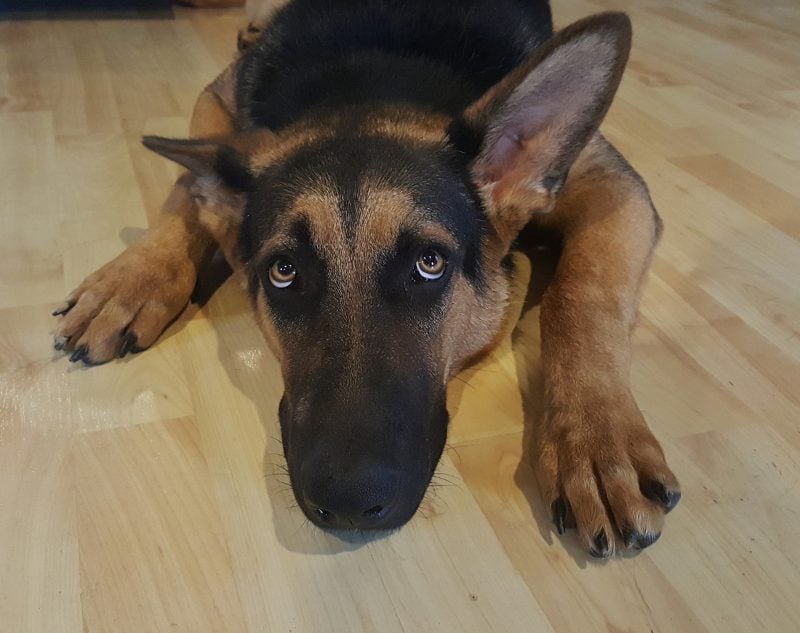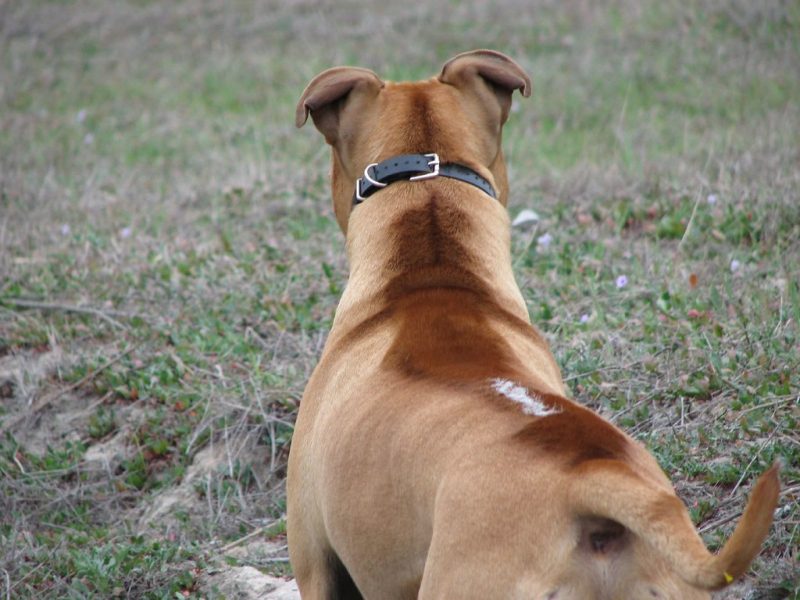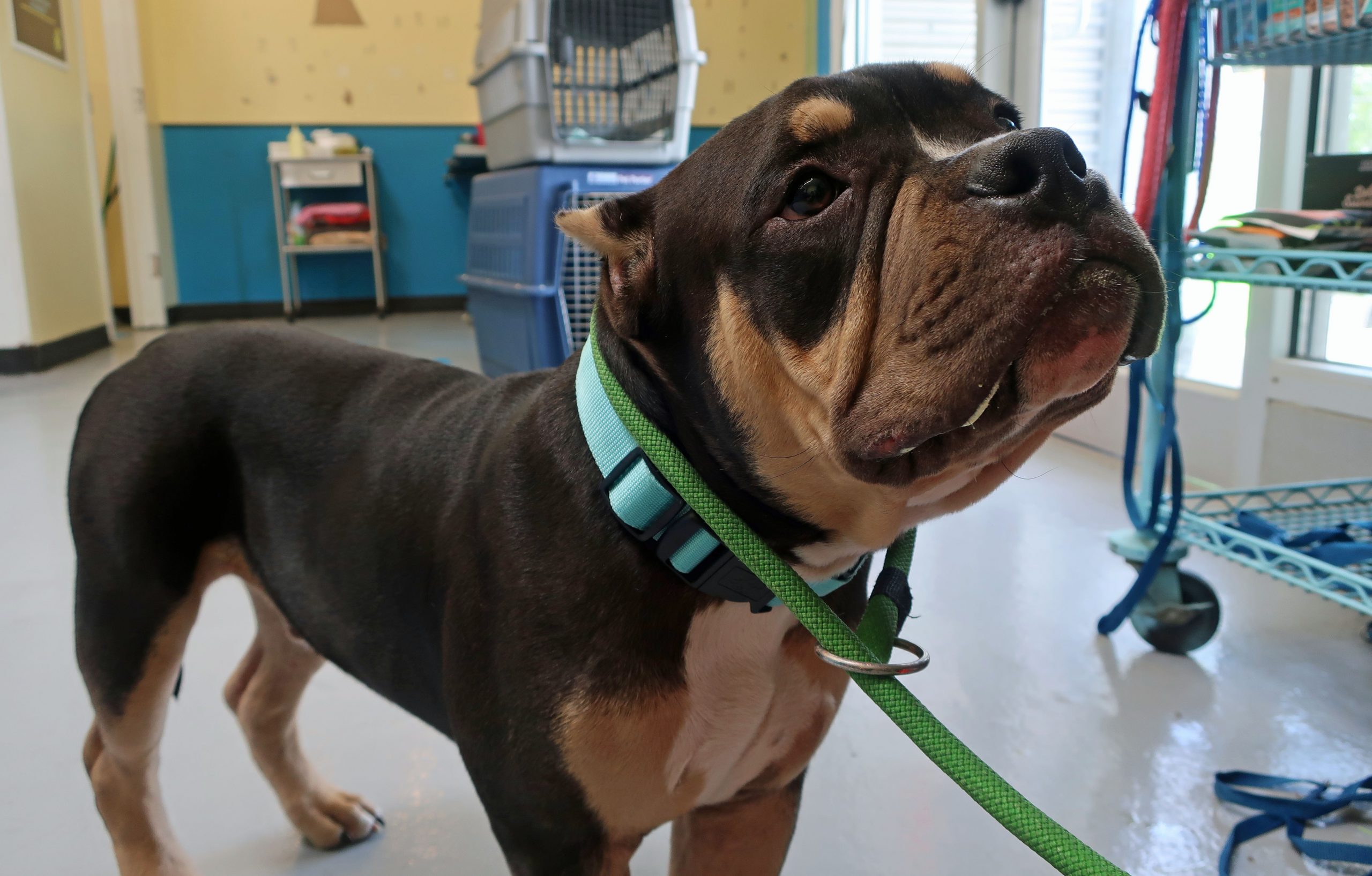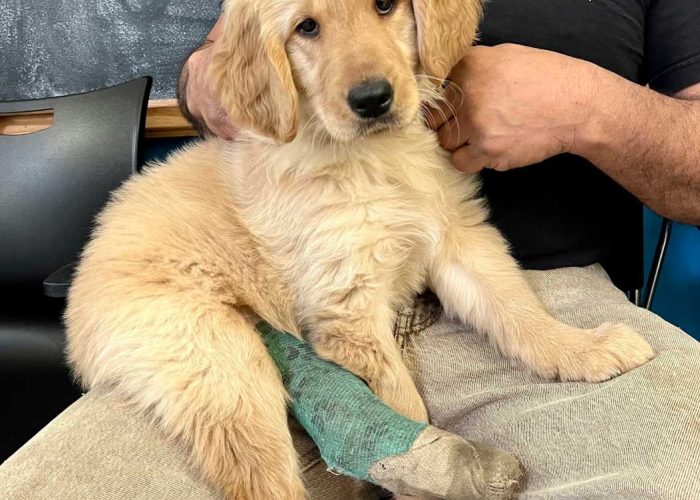So, unless you know something we don’t, dogs can’t talk.
They do communicate, however, through their body language. Today we thought we’d take you through some of the common signals dogs use to indicate how they’re feeling. Even if you already own a dog, reading up and understanding all the signals they’re putting out there helps you be the best dog owner you can be, as well as a better friend to your pup.
Let’s take it piece by piece.

Eyes
When a dog is relaxed, their eyes look squinty; that is, none of the white of the eye can be seen. When a dog is tense, though, their eyes are rounder than normal, exposing more of the whites of the eye than normal. This is sometimes called “whale eye.”
Dilated pupils are also a possible sign of fear; they can make the eye look glassy, indicating that it’s feeling stressed or threatened.
Ears
Those cute little ears (or big, floppy ears) can tell you a lot. Generally speaking, the more erect and forward a dog’s ears are, the more alert and aroused they are. A relaxed dog’s ears are likely to be back a little or out to the sides.

Fur
Yep, your dog’s fur can tell you how they’re feeling! A dog’s hackles raising is their equivalent of us getting goosebumps. It generally happens down the spine, above the tail and across the shoulders. It’s not always a sign that aggressive behavior is on the way, but it’s a sure sign that your dog is upset or excited.
Tail
There are two things to look at here: the base of the tail, and the movement of the tail.
A relaxed tail hangs down, or is extended out below spine level. An excited or aroused dog will raise their tail above spine level.
As far as tail movement goes, a calm dog will show you a loose wag from side to side or a sweeping circular motion. When the dog becomes more excited, the tail may go from side to side in short, rapid movements.
A fearful dog will put their tail between their legs or hold it against their belly. It may also wag stiffly.
Posture
When dogs are feeling playful, you’ll be able to tell because their bodies are much looser and wigglier. If a dog’s posture is stiffer, or they’re moving slowly and/or away from you, they’re probably not very interested in friendship.
If a dog looks away, sniffs, scratches, or lies down, that’s also a strong indicator that they’re not interested in being social, which should be respected. It’s when those boundaries are crossed that the danger begins.
If a dog is fearful, they may lean away or back, tremble, crouch, lower their body or head, or roll over onto their side or back. This, combined with the “whale eye” should tell you that a dog is pretty freaked out and to let them get their bearings.
An aggressive dog is going to try to make itself look larger, by standing tall with a tense body, either centering its weight over all four feet or leaning slightly forward.

Mouth
Your standard dog mouth is open and panting. You know the face we’re talking about. No tension, just a regular doggy face.
When a dog is tense or stressed/fearful, a dog will generally close their mouth and may pull their lips back at the corners, which is known as a “long lip.” Panting is also another sign of fear or stress. Drooling when there’s no food around to drool over is another sure sign of stress.
When teeth are displayed, it’s not always aggressive. It’s important to pay attention to the other clues you’re being given.
If the top of the muzzle is wrinkled, the lips are pulled up vertically to display front teeth, and the corner of the mouth is short and forms a C-shape, this is called an “offensive pucker,” and would be cause for taking a step back and not putting the dog through any more stress.
But some dogs display their teeth when “smiling” as well. In this situation they usually have a wagging tail, lowered head, flattened ears, and soft, squinty eyes. In that situation, a dog is letting you know that they’re submissive.
Putting it all together
It can be hard to remember all the different body language cues, but with a little practice, you’ll soon be a dog body language expert.
Want to see what it all looks like in action? Check out this great Lili Chin graphic, which is one of our favorites:
The illustrations show what a huge variety of things dogs are trying to tell us, if only we pay attention. So get out there and observe! It’s the best way to sharpen your eye for dog body language!


